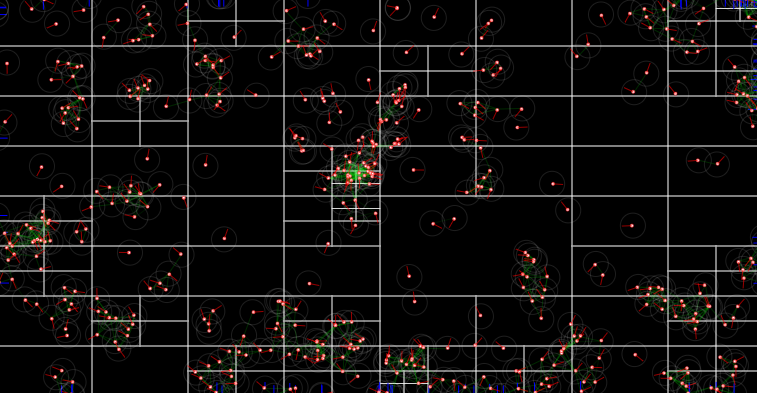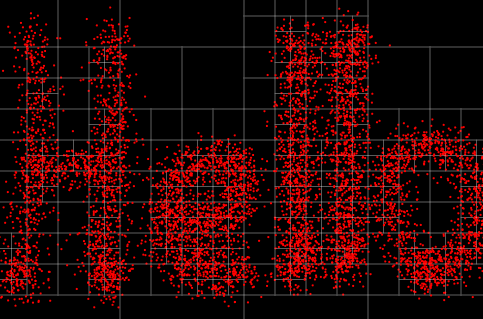Understanding Quadtrees: A Visual Guide
Introduction
As someone who has implemented quadtrees in multiple
projects, I can tell you they're one of the most fascinating
and useful data structures for spatial partitioning. In this
post, I'll break down how quadtrees work and why they're so
powerful for optimizing spatial queries in 2D space.
- Quadtrees are a cornerstone of efficient spatial partitioning in computer science.
What is a Quadtree?
A quadtree is a tree data structure where each node has exactly four children, or "quadrants." It's particularly useful for dividing 2D space into smaller regions, making it perfect for tasks like collision detection, spatial indexing, and image compression.
Why Use Quadtrees?
The main advantage of quadtrees is their ability to reduce the complexity of spatial operations from O(n²) to O(n log n) or better. In my flocking birds simulation and gravity projects, this made a huge difference in performance when dealing with hundreds or thousands of objects.
Real-World Applications
I've used quadtrees in several projects on this site:
- Flocking Birds Simulation: For efficient neighbor searches
- 2D Gravity Simulation: To optimize force calculations between bodies
- Collision Detection: For quick spatial queries in game development
QuadTree with Boids
Below is a snapshot of how quadtrees are used to speed up flocking simulations:
Notice how boids close together do not need to queury for boids outside their vicinity, improving performance
Boo! a slider section is below
There are three slides with images:
- First slide: square image
- Second slide: square image with a border radius
- Third slide: filled image
Implementation Insights
Here's a glimpse at the key parts of my quadtree implementation:
class QuadTree {
constructor(boundary, capacity) {
this.boundary = boundary;
this.capacity = capacity;
this.points = [];
this.divided = false;
}
subdivide() {
// Create four children...
}
insert(point) {
// Add points and subdivide when needed...
}
query(range) {
// Find points within a range...
}
}Key functions in the implementation:
- constructor(boundary, capacity): Initializes the quadtree with a boundary and capacity.
- subdivide(): Divides the current node into four child nodes.
- insert(point): Adds a point to the quadtree and subdivides if necessary.
- query(range): Retrieves all points within a specified range.
Check out my Flocking Birds or QuadTree Demo projects to see these concepts in action!
Further Reading
If you're interested in learning more about quadtrees and spatial partitioning:
- Wikipedia: Quadtree
- Check out my GitHub for implementation examples

